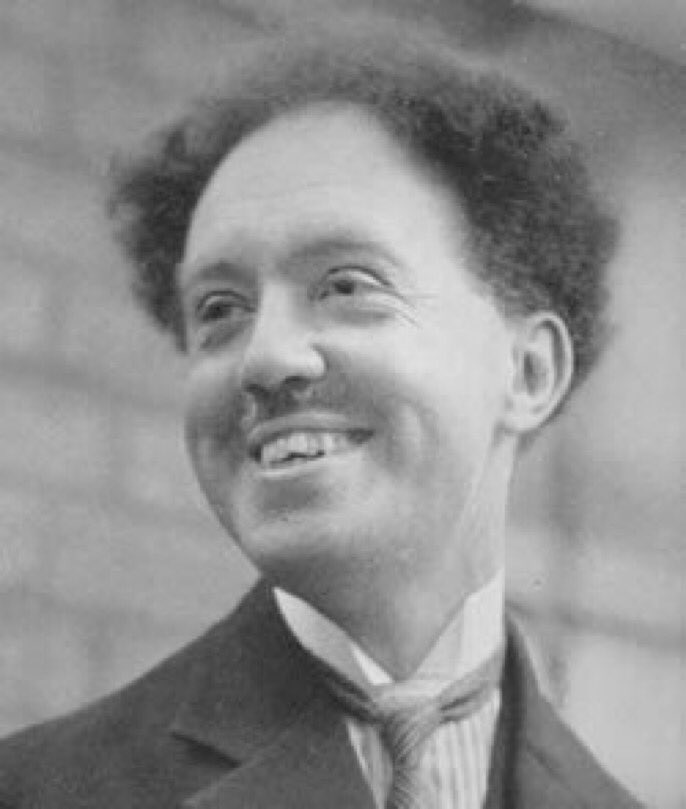Louis Victor Pierre Raymond de Broglie, the 7e duc de Broglie, was born #OTD in 1892. He postulated that matter must have wave-like properties, one of the defining features of quantum mechanics.
Image: APS
Image: APS
Louis de Broglie’s hypothesis, set out in his 1924 thesis, is easy to state. But first, a little background. Notable 17th & 18th century scientists (Descartes, Newton) advocated a “corpuscular” theory of light. Light was ~obviously~ little particles.
But Thomas Young’s 1801 double-slit experiment showed interference in coherent light that travels along different paths to the same point. That one has an easy explanation: Waves also interfere — they add up or cancel out depending on how they line up — so light must be a wave.
Then, in 1905, things got weird. That year Einstein explained the photoelectric effect by positing that light delivers energy (and exists) only in finite chunks.
Planck had assumed that the idea of quanta was probably a convenient way of representing unknown physics governing the interaction of light and matter, rather than a property of light itself. Einstein had showed that, in fact, quanta are real.
So more than 100 years after Young had conclusively demonstrated the waviness of light, Einstein showed that light of frequency f must carry energy in indivisible bits of size hf. Here, h is "Planck’s constant": 6.626 x 10⁻³⁴ J·s. This is a very particle-y behavior for a wave!
But this is just how nature works. Light exhibits some wavy behaviors and some particle-y behaviors. There's nothing to reconcile, it just seems odd to us because our inutition, based on living in the macroscopic world, tells us that “particle" and “wave" are orthogonal concepts.
Our intuition is great for baseballs and waves at the beach, but there’s no reason that it should extend to the subatomic world. There’s nothing weird about “wave-particle duality.” Nature is what it is.
Anyway, back to de Broglie.
Anyway, back to de Broglie.
Since light, our canonical example of a wave-y thing, can have particle-y properties, de Broglie suggested it might also work in the other direction. That is, perhaps something like an electron might occasional exhibit behaviors we associate with waves?
In special relativity, a massless particle like the photon has momentum p = E/c. And its energy at frequency f comes in these E=hf chunks. Since the speed of light is c = λ*f, we can rearrange all that to get λ = h/p.
So de Broglie proposed that a particle with momentum p should have an associated wavelength λ = h/p. A few years later, in 1927, this was confirmed in electron diffraction experiments by Thomson, and independently by Davisson and Germer.
This led to a Nobel Prize for de Broglie in 1929, and for Thomson and Davisson in 1937. A lovely little twist is that Thomson’s father J.J. Thomson is credited with discovering the electron. Essentially, father showed that it was a particle and son showed that it was a wave.
Demonstrating the wave properties of matter is easiest for electrons; their small mass means a small momentum and hence a large wavelength. But it has since been shown for neutrons, atoms, and entire molecules.
Here, a team from Vienna observes the diffraction of C₆₀ molecules! https://www.nature.com/articles/44348
de Broglie's result was central to the development of quantum mechanics. Schrödinger, in his papers on quantization, wrote:
"Above all, I wish to mention that I was led to these deliberations in the first place by the suggestive papers of M. Louis de Broglie."
"Above all, I wish to mention that I was led to these deliberations in the first place by the suggestive papers of M. Louis de Broglie."
Besides remaining active into the 1970s (I'm aware of at least one paper from 1972, when he was 80), de Broglie wrote many books about science for lay audiences. In 1952 he was the inaugural recipient of UNESCO's Kalinga Prize for the Popularization of Science.

 Read on Twitter
Read on Twitter



